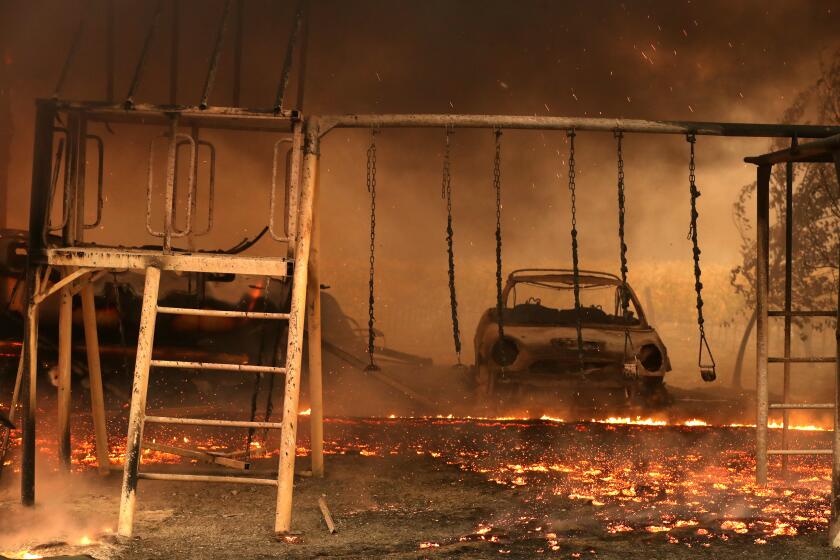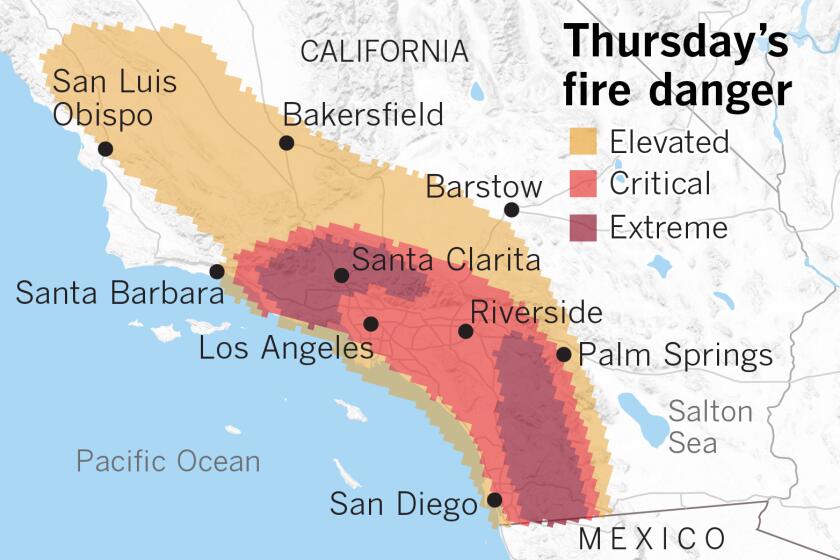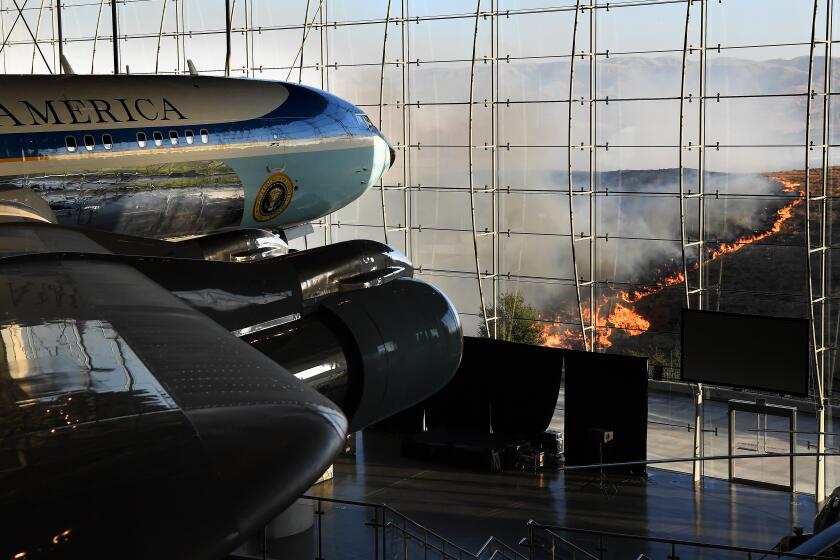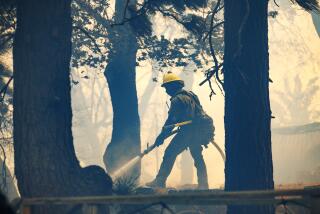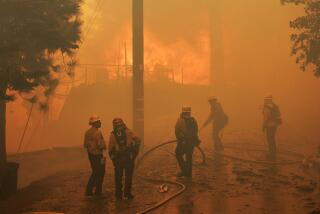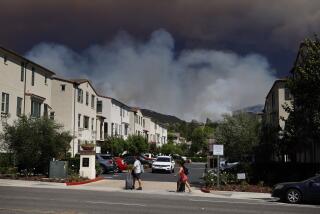Sonoma County’s gamble on mega-evacuations leaves many residents unhappy
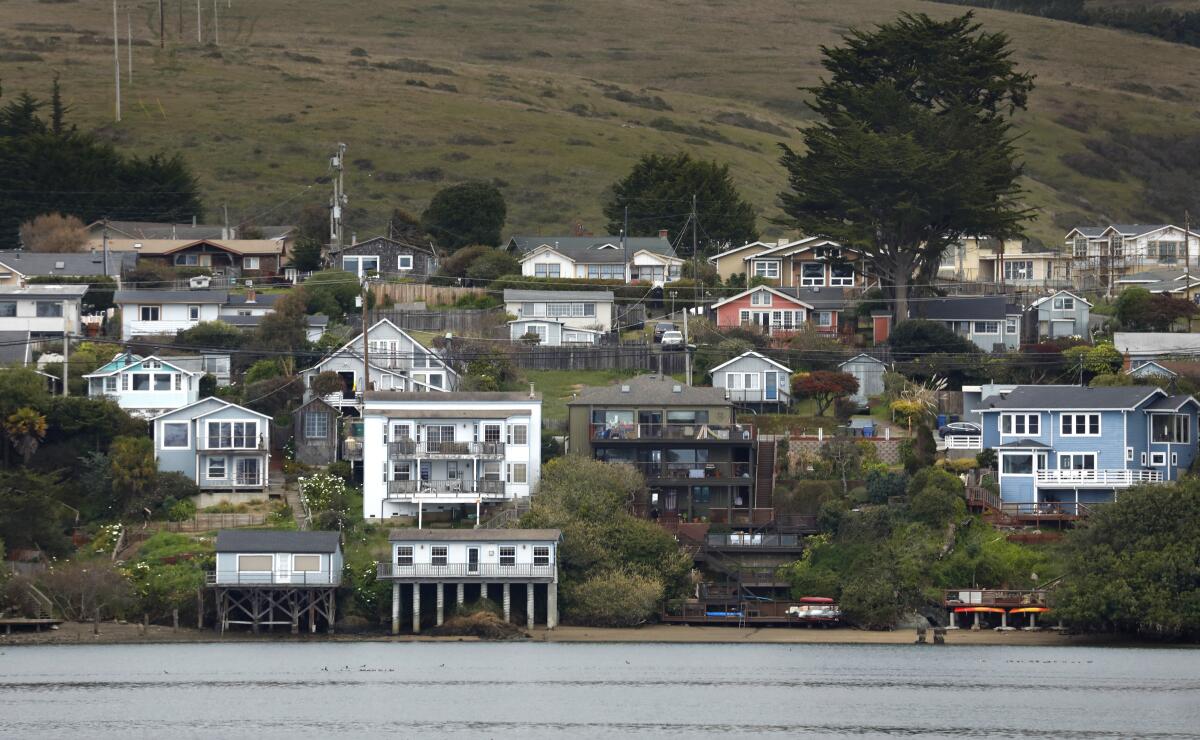
BODEGA BAY, Calif. — Rob Lawrentz and Angel Brown, a retired couple from West Virginia, were on their dream vacation, cruising the California coast on Highway 1. She had never seen the Pacific Ocean. He wore a shirt that said,”Almost Heaven.”
On Tuesday afternoon, after a four-hour drive north from Monterey, they pulled into Bodega Bay, the little fishing town where Alfred Hitchcock’s “The Birds” was filmed. It was deserted, and the lights were off at Bodega Harbor Inn, where they’d booked a room weeks ago.
“We pulled in and it was like, ‘uh-oh,’” Brown said.
“It’s usually a bad sign when there’s no cars,” Lawrentz added.
The vacationers were 40 miles from the Kincade fire burning in the Mayacamas Mountains northeast of Healdsburg. But Bodega Bay had been vacated.
The couple had driven straight into what could become a new normal: a mega-evacuation zone.
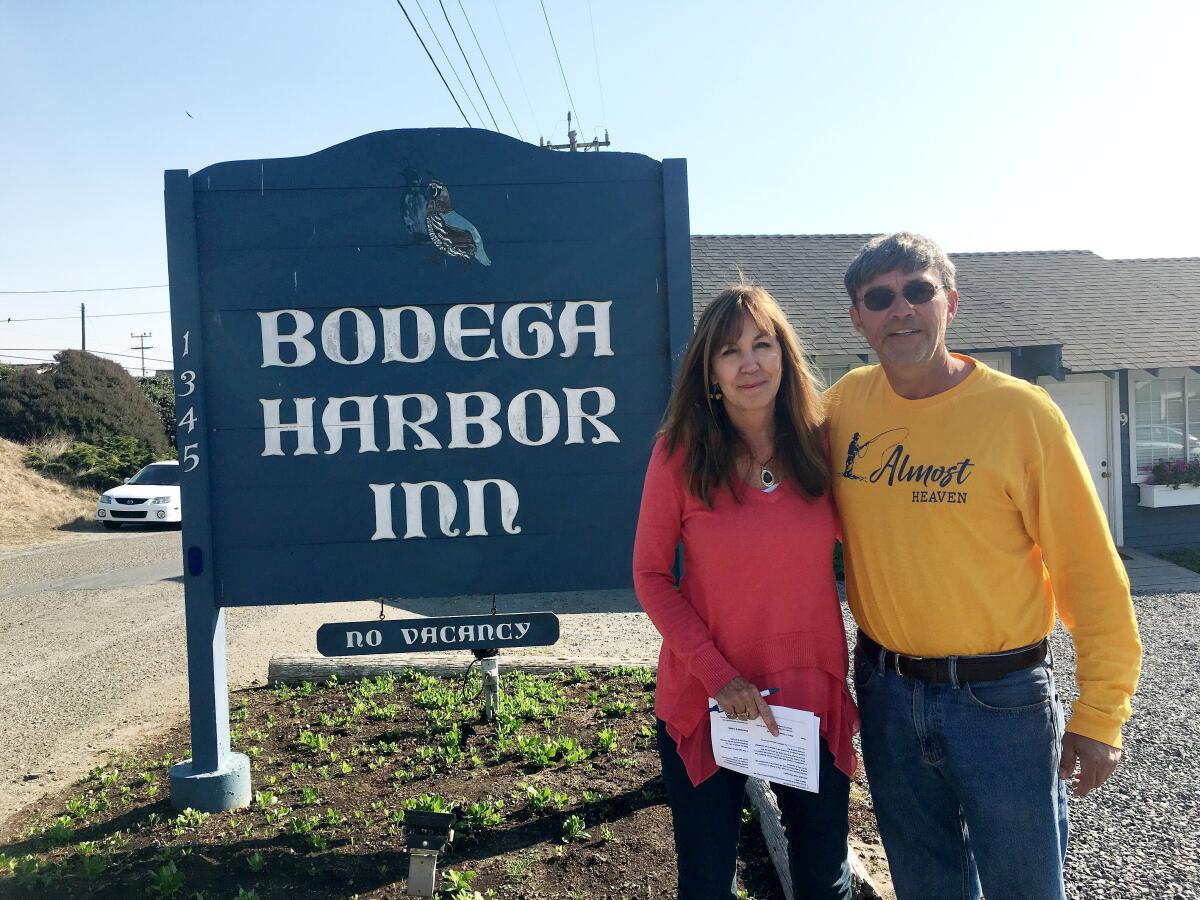
California wildfires over the past two years have left unprecedented destruction and loss of life, leveling thousands of homes and killing dozens. The death toll left communities like Paradise and Santa Rosa stunned and exposed major weaknesses in emergency evacuation systems.
So this year, Sonoma County officials didn’t take any chances, issuing an unprecedented mandatory evacuation order that stretched all the way to the coast, forcing nearly 200,000 people out of their homes.
No deaths have been reported from the Kincade fire, which has burned mostly in uninhabited areas and destroyed 94 homes.
But many residents questioned whether officials overcorrected, pulling far too many people into the evacuation zone.
On Tuesday, Greg Garcia unloaded a new Craftsman generator from his pickup. The power was still out at his home in Bodega Bay, and overnight temperatures were dipping into the 40s.
The retired transportation worker had left town Thursday and gone to visit his mother in Milpitas because he knew it was going to be windy and he couldn’t go fishing. He’d planned to come back Saturday, but the evacuation kept him away until Tuesday.
“People were really upset,” Garcia said. “I think it was overkill, but I think they didn’t want to say they didn’t tell people. But I think they overdid it. They really did.”
But Sonoma County Sheriff Mark Essick said authorities learned hard lessons from the 2017 Tubbs fire that killed 22 people and destroyed thousands of homes. Then, authorities were criticized for inadequate warnings that did not reach many of those in peril.
“I absolutely stand by the decisions that we made,” Essick said of the Kincade fire evacuation.
With the Kincade fire, authorities had more time, Essick said. During the Tubbs fire, people in Santa Rosa awoke to flames at their doorstep. Northeasterly Diablo winds had already been forecast for days by the time the Kincade fire started Oct. 23 in a remote mountain area off John Kincade Road and Burned Mountain Road.
Despite strong gusts up to 60 mph, firefighters made progress in containing the massive Kincade fire in Northern California’s Sonoma County.
The fire initially — and luckily — crept south for about a day before threatening more-populated areas, Essick said. The sheriff was working closely with meteorologists and fire behavior experts, using computer models to predict the fire’s path. It was a process he compared to hurricane forecasting, with a wide cone of potentially impacted areas that narrows with time.
Essick knew that if the fire jumped Highway 101, wind-driven embers could blow all the way to the coast. On Saturday, three days after the fire began, he ordered Bodega Bay residents to leave. The next day, top wind gusts hit 96 mph.
“I couldn’t live with myself if we didn’t warn people,” Essick said. “I would rather inconvenience some folks and have them question that inconvenience than lose a life. There’s no excuse for us to lose a life in this fire.”

As of Wednesday, that strategy seemed to have worked.
Previous fires across the state have been marked by chaotic evacuation plans, including the failure to use the latest technology to broadcast Amber Alert-style warnings on cellphones ahead of deadly disasters.
In the first hectic days of the Tubbs fire, hundreds of people initially were reported missing. That didn’t happen with the Kincade fire.
The fire fight appeared to turn a corner Tuesday night, and the blaze’s containment was doubled to 30% on Wednesday morning. Forecasters were predicting favorable conditions for the rest of the week. The Kincade fire had destroyed 206 structures in Sonoma County, including 94 homes, according to Cal Fire.
Essick said Sonoma County has been through a lot, with the Tubbs fire, catastrophic flooding of the Russian River in February that forced thousands to evacuate, and now this.
On Tuesday morning, Essick, who lives in Cloverdale, talked to his neighbor, who had his mother, sister and niece staying at his house because of the evacuation. The man had a relative who lost a home during the Tubbs fire, Essick said.
“He said to me, ‘Mark, I don’t know. I don’t know if I want to stay in Sonoma County,’” Essick said.
Asked how he responded, Essick paused for several seconds. He commiserated with his neighbor, he said.
“You want to be there to support people, but at the same time, it does wear on you,” Essick said. “You think, gosh, is this maybe not the right place to live?
“Sonoma County’s beautiful, we’ve got great people, great weather, millions of people come here each year to visit. But, I don’t know. Sorry, I’m kind of talking in circles, but it’s hard. It’s hard to love a place so much yet have all these things that just keep happening.”
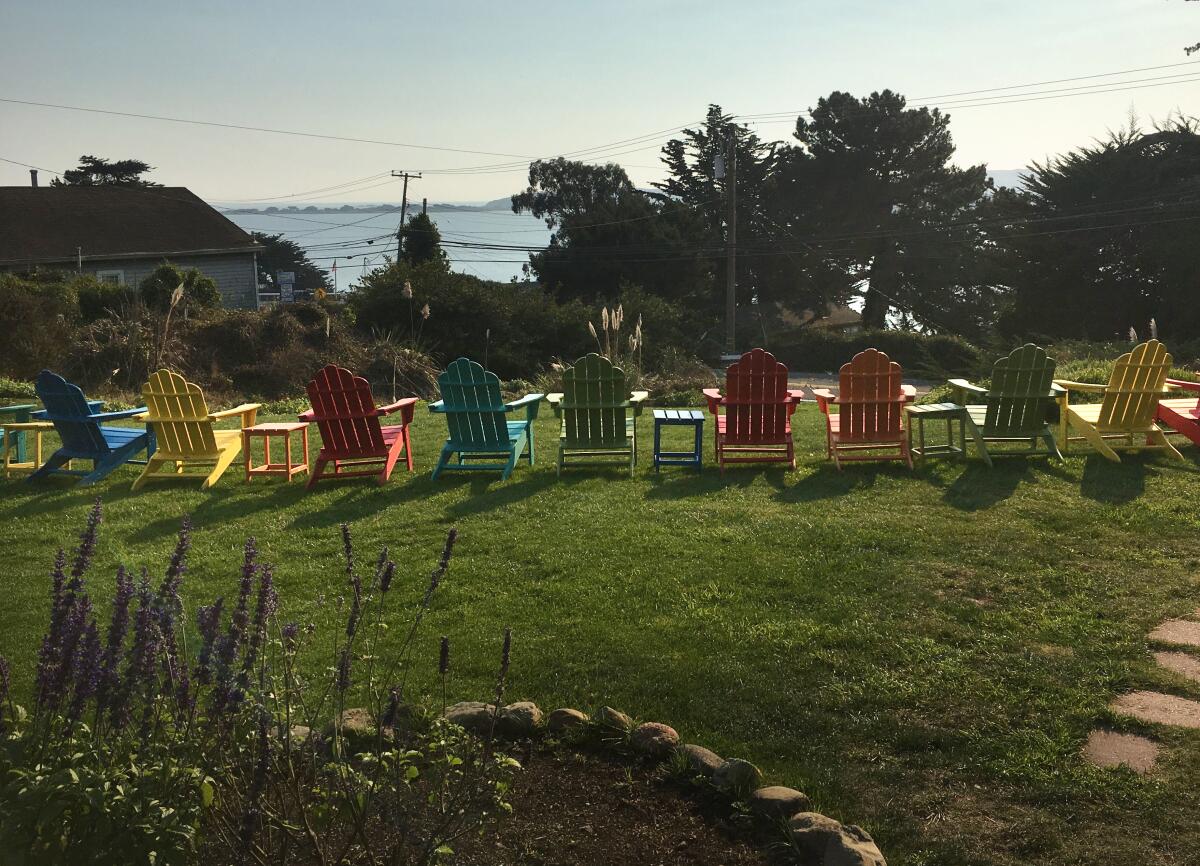
At Bodega Harbor Inn on Tuesday, the West Virginia vacationers were baffled by the evacuation order. On their drive north, they had barely smelled smoke.
Brown and Lawrentz had booked their room through Expedia. Because of the ongoing Pacific Gas & Electric power outage, staff at the Bodega Harbor Inn couldn’t access computerized guest information. On Tuesday, two staff members were using LED lights, landlines and paper printouts with some guests’ contact information to try to connect with people to cancel their stays.
Nickey Meindersee, who works the front desk, called hotels all the way up the coast, trying to get Brown and Lawrentz a room. But the blackouts were so widespread, they practically would have had to drive to Oregon to remain on the coast. They decided to reroute and drive to Lake Tahoe.
Lawrentz was especially disappointed.
“I’m a retired shop teacher,” he said. “I specialized in wood. All I want to do is stand there beside a redwood tree and take my picture.”
Meindersee, apologetic, hugged Brown before they drove off. She said she worries it’s going to be economically tough for the 16-room hotel if the power gets shut off every time the wind blows and the evacuation zones are this big going forward.
Wine country evacuees usually go west or south, Meindersee said, adding that lots of people who fled the Tubbs fire had camped on the beach in Bodega Bay, parked their RVs through town and filled hotel rooms.
She has lived here 25 years, and during that time the town has never been evacuated because of a fire. “This is the place you go for safety because the water’s there,” Meindersee said. “Whenever there’s a fire, we get inundated with people.”
Around 1 a.m. Sunday, sheriff’s deputies drove through Bodega Bay, sirens blaring, shouting on bullhorns that people had to leave, she said. Meindersee — along with her 2-week-old grandson, 5-year-old granddaughter and her daughter and daughter’s fiance — raced out of a blackened town to her uncle’s house in Novato, 40 miles east. Novato also had no power.
They had to drive an additional 23 miles southeast of Novato to find a working gas station. Meindersee was back in Bodega Bay on Tuesday because she had to work. The mandatory evacuation was downgraded to an evacuation warning Monday, and the warning was lifted Wednesday afternoon.
“There’s a new normal every year around October here,” said George Scott, the hotel’s property manager.
Scott, who lives on site, did not evacuate. He stayed awake Saturday, listening to the winds and watching ash fall from the sky. But he never felt endangered.
Some 800 firefighters battled the wind-whipped Easy fire surrounding the Ronald Reagan Presidential Library. They were stymied by intense gusts that sent embers flying far beyond the body of the blaze.
“There’s no doubt that a lot of it is not overkill, but there is a good portion of it that is. ... Anywhere along the coast is not all that necessary,” he said. “But I understand too. It’s all about prevention and making sure that no lives are lost.”
Across the street, people flocked to Diekmann’s Bay Store, which was powered by generators and never closed during the evacuation. Store clerk David Petersen, who was ringing up bottles of Jim Beam and cans of Bud Light, said frustrated customers had been venting about the evacuation all weekend.
Petersen spent two days in a Petaluma evacuation center and got back Monday. He never thought there was real danger.
“If it crossed the freeway, then you might have doubts. Maybe,” he said, shrugging. “We’ve been busy. We’re the only place open.”
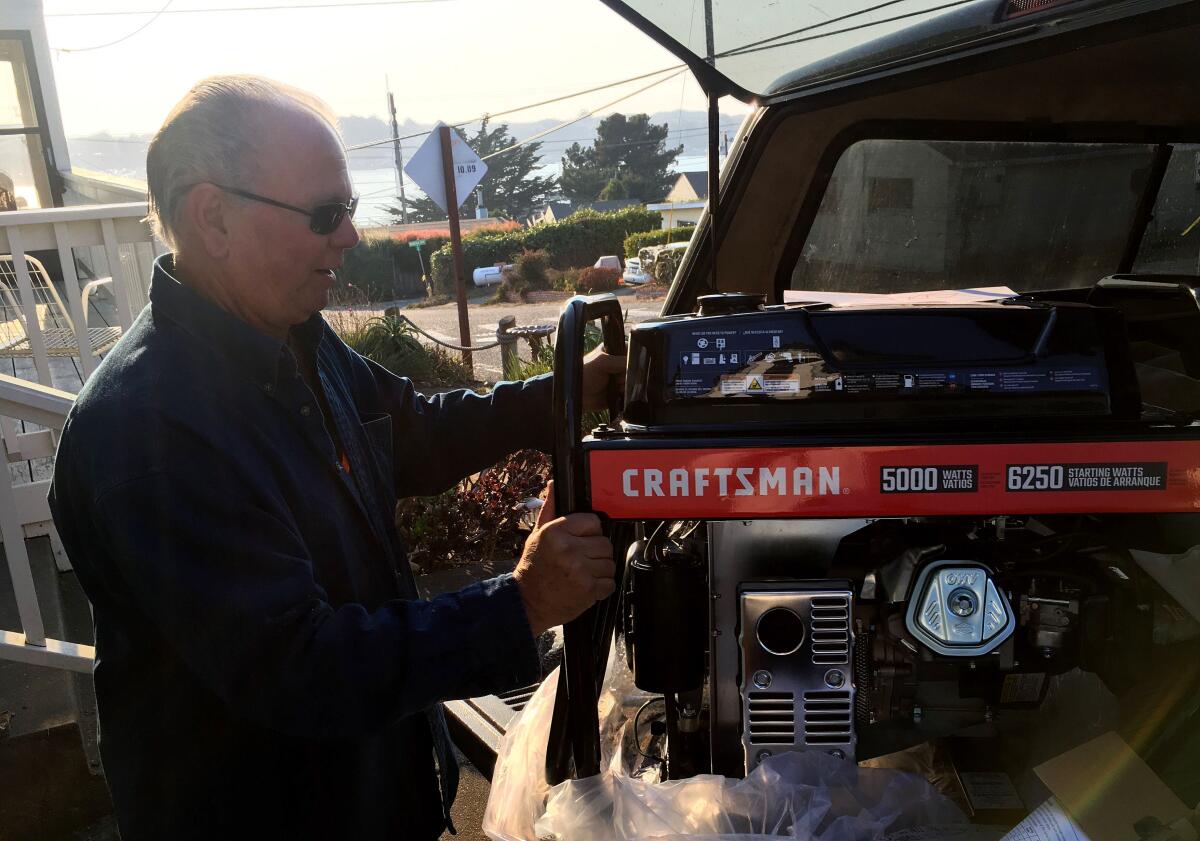
On Tuesday afternoon, generators hummed all through town, even as it remained under evacuation warning. Garcia, the retired transportation worker, said people are accustomed to heavy wind here and that people won’t stand for blackouts and evacuations every time winds are in the forecast.
“You know what they call Bodega Bay? Blowdega Bay. The wind blows so bad here,” Garcia said. “If you go fishing, you usually have to come back in by 1 because that’s when the wind picks up.”
In fact, Garcia’s house sits at the intersection where scenes of children running from the schoolhouse in “The Birds” were filmed. At Taylor Street and Windy Lane.
More to Read
Sign up for Essential California
The most important California stories and recommendations in your inbox every morning.
You may occasionally receive promotional content from the Los Angeles Times.
